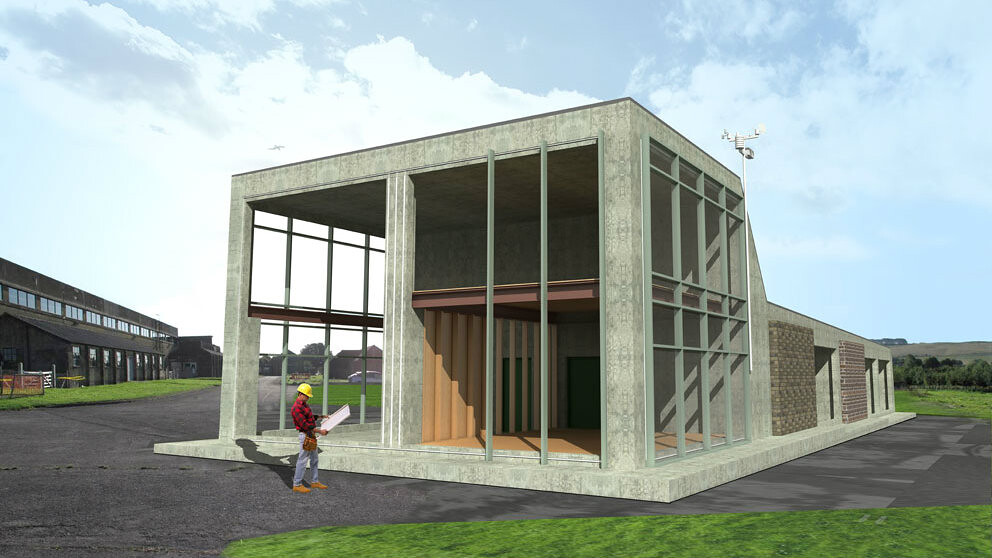Academic and industry partners can use the facility to test low carbon construction materials and systems in order to reduce the environmental impact of buildings in the future.
Construction of the HIVE – a £1m project funded by the Engineering and Physical Sciences Research Council (EPSRC) - began in April and is expected to be completed in July 2014. The Science Museum – which has a storage facility there - is leasing the land to the University at a peppercorn rent in order to further encourage the development of sustainable construction materials and systems.
Before being incorporated into real buildings, new building materials and systems are developed in the laboratory and must be evaluated at full scale. Finding suitable space, securing planning permission and installing the necessary scientific and technical infrastructure can cause delays to the process - in some cases meaning that research findings can take 10 years to be put into practice. The HIVE resolves these issues, providing a ‘plug and play’ facility and expertise where researchers and companies can test and evaluate materials and systems, thereby bringing new technologies to market quicker.
The building has eight individual cells which are carefully constructed to be completely insulated from each other, each with a single face left exposed to the external environment. The faces are used to install walls made from a whole range of materials and construction systems, and the performance of these walls is evaluated in real life conditions.
Tests available include a material’s hygrothermal and environmental performance, buildability and durability, and in addition researchers can evaluate the internal environment that construction materials create. The HIVE also features:
- a double height and width cell that can be used for flexible construction design, testing façades, internal walls and floors, together with a strong roof, allowing for load testing
- a flood cell that can be used for testing the resistance of construction materials to high water levels or for testing technologies that resolve the effects of flood damage
- a bladder cell that enables the testing of construction panels against horizontal loading such as wind load and geotechnical forces.
Alongside the HIVE is a separate facility for testing building materials, comprising 16 individual ‘platforms’. These 25m2 platform foundations act as bases on which small temporary structures or ‘pods’ of up to 125m3 can be built and tested.
The first research project to launch at the Building Research Park involves the use of five pods for the EU-funded project HEMPSEC, aimed at expanding the market for a pre-fabricated, pre-dried, panelised system of hemp-lime construction.
The 36 month programme includes a 24 month test phase which will construct, instrument, monitor and analyse the environmental performance of a number of small experimental buildings. Parallel research programmes will be running in Spain and France to test the material’s performance in different climatic conditions. A comparative analysis of performance will be undertaken against the 'standard', and alternative building materials and an environmental model will be developed. The success of the project will result in wider adoption of hemp-lime construction across the EU.
Dr Mike Lawrence of the University of Bath and Director of the BRP, commented: “We are very excited to launch our first piece of research with HEMPSEC. The Building Research Park is a pioneering site which will speed up the delivery to market of future energy-efficient construction materials and systems.”
To discuss opportunities and book research facilities, please see www.bath.ac.uk/brp, contact building-research-park@bath.ac.uk or follow @HIVEBRP on twitter
If you found this interesting, you may also enjoy:
BaleHaus: innovation in straw bale building
New centre aims to design low-carbon buildings for the future

